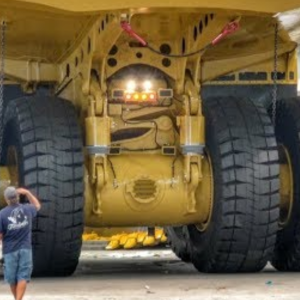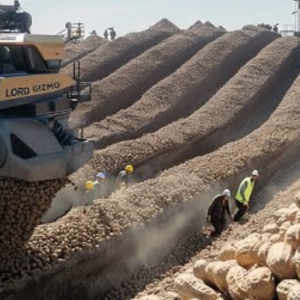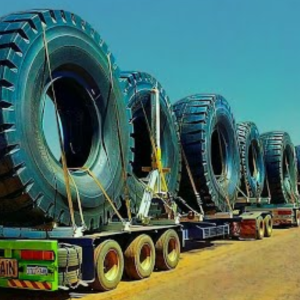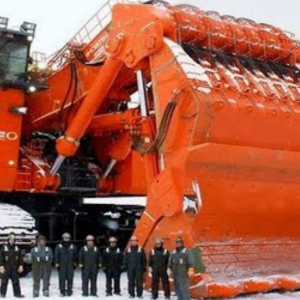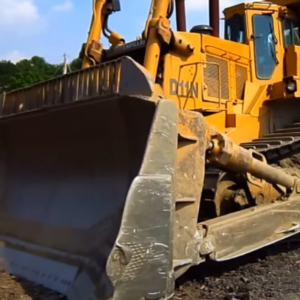
As the USA sank into the worst economic depression in history, Toledo automaker Willys-Overland very nearly went out of business. The product that kept it afloat, barely, was the unlikely Willys 77.
Like much of the American auto industry, Willys-Overland cycled through wild swings of boom and bust. In the late ’20s, the Toledo carmaker was very briefly third in sales in the USA, trailing only Ford and Chevrolet on the strength of its popular four and six-cylinder Whippet models. At this high point, company founder John North Willys retired, selling off his common stock and departing to become Ambassador to Poland for President Herbert Hoover. No surprise there, as Willys was a major contributor to the Hoover campaign.

But as the economy began to falter and then fail following the great Wall Street crash in October of 1929, the auto industry tanked with it. Willys-Overland fell even harder and faster than the rest, piling up losses of $35 million between 1929 and 1932. Willys rushed back to Toledo in June of 1932, injecting $2 million of his own cash into the company to keep it running as the nation’s banking system collapsed, but it wasn’t enough. In February of 1933 the company was declared bankrupt, and as leading holder of the company’s preferred shares, Willys was named a co-receiver of the remains.
As a frequent traveler to Europe, Willys was a fan of light, advanced cars in the European style, and his plans for the rebirth of WIllys-Overland included the discontinuation of the existing model line—obsolete and unwanted by then—and the introduction of two totally new models: the compact Model 77 and the 99, similar in design to the 77 but of a more conventional size. With the company under the tight-fisted supervision of a federal bankruptcy judge, there was no funding for the 99, and it was canceled before it went into production. (Read about the ill-fated Willys 99 here.) The company’s hopes were pinned entirely on the small and unlikely 77.

The production mockup above shows the 77 in nearly its final form. With rather unusual styling (strange, some might say) by Amos Northup, the petite machine rode on a stubby 100-inch wheelbase. Contributing to the unique appearance were a radically sloped nose (critics nicknamed the 77 the “potato digger”) and stamped-steel seashell wheels that were manufactured for W-O by Kelsey-Hayes. There were but two models, coupe and sedan, with commercial body styles added later.
The left photo above reveals what might be the car’s most unusual feature: its 51-inch track width. Some five inches narrower than the industry’s standard 56-inch track, the 77 didn’t fit in the ruts made by other cars in the snow or on the unimproved dirt roads of the day. Drivers were forced to choose one rut or the other and drive around with a severe tilt, an unstable and uncomfortable condition. The 77 was a city mouse. And with a base price of just $395, the 77 was basic in the extreme in its appointments, with cardboard door panels and low-grade upholstery. It was a cheap car and it looked the part. (Drag racers would later appreciate the 77’s features. Years later.)

The chassis featured a sturdy ladder frame with X-member and conventional beam axles, semi-elliptic leaf springs at both ends, and Bendix four-wheel mechanical brakes. The body was nearly all steel, advanced for the time, and from his old friend and rival Walter P. Chrysler, Willys obtained a license to use Chrysler’s innovative Floating Power engine mounting system. The engine, a 134-cubic inch inline four, was a development of the Whippet four from a few years previous. In its 1933 tune it produced a mere 48 hp, but it would be continually updated over the coming years, and it eventually became the powerplant for the famed Jeep.
While under the control of the federal court, Willys-Overland was permitted to build cars a few thousand units at a time, only when it could demonstrate it had parts and orders in hand. Sales were meager: 15,167 in 1933 and a bleak 6,576 in 1934, and the company subsisted for a time manufacturing pickup trucks for International Harvester. Willys died in 1935 following a heart attack at the Kentucky Derby, but the company struggled on, reorganizing again in 1936 as Willys-Overland, Inc. An improved, standard-width update of the 77 was introduced in 1937 (read about it here) and this vehicle, in turn, became the mechanical basis for the Willys Jeep. And now, more than 80 years later, Willys-Overland is long gone, but the Jeep name lives on as one of the most valuable consumer brands in the world—thanks to a peculiar little car that sold just enough to keep a company afloat.

